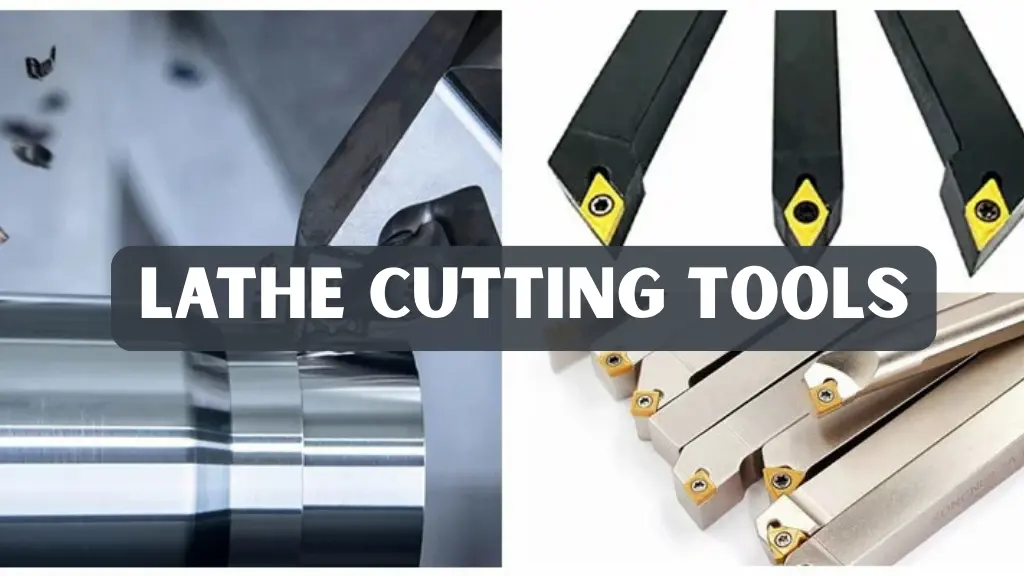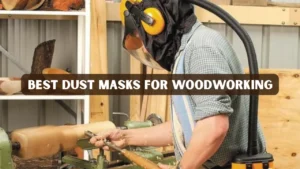Purchasing or working with a lathe machine means one critical decision: choosing the right cutting tool. The quality of your machining process depends heavily on tool selection. The wrong tool causes chatter, poor surface finish, tool breakage, and wasted time. The right tool delivers efficiency, accuracy, and consistent results. In this detailed guide, we will explore lathe cutting tools, their materials, geometries, applications, and selection strategies. The goal is to provide machinists, engineers, and enthusiasts with reliable knowledge based on both industry standards and practical shop-floor experience.
Why Lathe Cutting Tools Matter
A lathe machine removes material by rotating the workpiece while a cutting tool feeds against it. The cutting tool is therefore the heart of the process. Every decision about the tool affects cost, cycle time, part quality, and even operator safety. Tool choice involves more than just geometry. It also requires attention to material, rake, clearance, edge strength, nose radius, and how the tool interacts with coolant and workholding.
From small hobby workshops using high-speed steel tool bits to industrial facilities running indexable carbide inserts at 400 meters per minute, the principles remain the same: the cutting tool determines whether the process succeeds.
Understanding Tool Materials
The performance of cutting tools depends heavily on material composition, as each balances hot hardness, toughness, and wear resistance differently. High-Speed Steel (HSS) is tough, inexpensive, and easily shaped, making it ideal for prototypes and low-volume work. However, it loses effectiveness at higher speeds due to poor heat resistance. Cemented carbide is stronger at elevated temperatures, widely used in production, though it is more brittle than HSS.
Cermet and ceramic tools are often chosen for finishing operations where precision and surface quality matter most. Cermet provides stable wear, chemical resistance, and smooth finishes on steels, though it lacks the toughness of carbide. Ceramic tools allow extreme cutting speeds, performing well on cast iron and heat-resistant alloys. Their brittleness requires rigid setups and continuous cutting conditions to avoid breakage.
Advanced materials like Cubic Boron Nitride (CBN) and Polycrystalline Diamond (PCD) serve specialized needs. CBN is highly effective for hardened steels, bearing races, and shafts, but it is expensive and sensitive to instability. PCD, the hardest material, works best on aluminum, copper, composites, and plastics while delivering excellent surface finishes. When applied correctly, these materials enhance the performance of lathe cutting tools, improving productivity, tool life, and machining reliability.
ISO Material Groups
The ISO system classifies cutting materials and applications into groups to help machinists choose the right tool grade for each job. Group P covers steels, which are the most commonly machined materials, while M is used for stainless steels that require tougher and more heat-resistant tools. K applies to cast irons, which need cutting edges capable of handling abrasive wear, and S is designed for heat-resistant superalloys and titanium, where high strength and thermal stability are critical.
N represents non-ferrous metals like aluminum and copper, which benefit from sharp edges and high cutting speeds, while H is reserved for hardened steels that demand very strong, wear-resistant tool grades. By understanding and applying these ISO groups, machinists can make informed decisions, ensuring efficiency, longer tool life, and consistent part quality across different machining operations. For further reference, you can review the ISO 513 standard on cutting tool materials
Insert Shapes and Codes
Indexable inserts are classified using an international naming system that helps machinists quickly identify their shape, size, and cutting capabilities. For instance, CNMG inserts are among the most common in turning, with “C” representing an 80-degree rhombic shape that offers versatility for both roughing and finishing. Other shapes include the 55-degree rhombic (D), which is well-suited for finishing but has weaker corners, and the 35-degree (V), which excels in detailed work though it is more fragile.
Square (S) inserts provide very strong edges, while triangular (T) inserts are ideal for light to medium applications. Beyond the shape, each letter and number in the insert code defines important factors like geometry, tolerance, size, and nose radius. Understanding and applying these insert codes is essential when working with lathe cutting tools, as it ensures machinists can optimize performance, improve efficiency, and extend tool life in a wide range of operations.
Key Geometry Factors
Rake angle, clearance angle, nose radius, and entering angle are fundamental aspects of tool geometry that determine machining efficiency and part quality. A positive rake angle reduces cutting forces and is useful on weaker setups, though it can shorten tool life, while a negative rake strengthens the edge but demands higher cutting forces. Clearance angle is equally important, as it prevents the tool from rubbing against the workpiece, with options ranging from neutral to positive depending on the holder design.
Nose radius and entering angle also significantly affect performance. A larger nose radius can deliver superior surface finish at higher feeds but generates more cutting pressure, while a smaller radius lowers pressure but may reduce finish quality. Entering angle influences chip flow and cutting force distribution; steeper angles direct forces axially, making them advantageous for slender parts.
Types of Cutting Tools for Lathe
External turning tools are essential for reducing diameters and producing cylindrical surfaces with precision. Roughing inserts feature strong edges and chipbreakers to handle heavy material removal, while finishing inserts are sharper and more precise for achieving smooth surface finishes. Facing tools, on the other hand, are designed to move radially across the workpiece, creating a flat and accurate surface that meets dimensional requirements.
Boring tools are widely used in internal turning, requiring rigid boring bars with minimal overhang to prevent vibration and ensure accuracy. Parting and grooving tools play a critical role in separating components or creating narrow grooves. Success with these tools depends on rigidity, optimized blade design, and effective coolant delivery to prevent tool failure and improve efficiency.
Threading tools are designed with specific thread profiles to cut accurate threads, requiring precise control of depth and feed strategies. Form tools, whether made from HSS or carbide blanks, are ground into special shapes to create unique profiles tailored to specific machining needs. Collectively, these Lathe Cutting Tools cover a wide range of turning operations, combining versatility with reliability for consistent machining performance.
Setting Cutting Data
Accurate cutting data is critical for extending tool life and maintaining consistent part quality. Cutting speed is calculated from surface speed and workpiece diameter, ensuring the right spindle speed for material and tooling. Feed rate, measured per revolution, directly impacts chip thickness and surface finish, while depth of cut determines tool load and efficiency. These parameters must be balanced carefully for reliable machining results.
For example, when turning a 30 mm mild steel bar with a carbide insert at 180 m/min, the calculated spindle speed is approximately 1900 RPM. Using a feed of 0.12 mm/rev and a depth of cut of 2 mm provides optimal cutting conditions. This machining data example reflects industry best practices, combining technical accuracy with practical application to achieve durability, precision, and trust in machining outcomes.
Chip Control and Surface Finish
Proper chip control is essential for safe and efficient machining. Long stringy chips not only damage work surfaces but also pose safety hazards by tangling around tools or parts. Skilled machinists use chipbreakers to curl and break chips effectively, reducing risks and maintaining consistent workflow. This demonstrates expertise in applying proven practices to improve both safety and productivity.
Surface finish is another critical factor that reflects machining quality and precision. It depends on feed rate, nose radius, machine rigidity, and coolant strategy, all of which require informed adjustments. By using positive rake inserts and maintaining controlled feeds, professionals achieve smoother finishes and longer tool life. These practices highlight trustworthiness and authority in machining processes, ensuring reliable results.
Coolant Strategies
Choosing the right coolant method is essential for tool performance and part quality, and experienced machinists adapt based on material and operation. Flood coolant is trusted for stainless steel and gummy metals as it controls heat and clears chips. Minimum quantity lubrication works well for light cuts on non-ferrous metals, offering cleaner operation and reduced waste.
In contrast, dry cutting with ceramic inserts proves effective on cast iron and high-temperature alloys, showing expert judgment and reliable application of proven machining practices.
Workholding and Rigidity
Even the best insert cannot perform well without proper rigidity, which makes stability a foundation of successful machining. To minimize vibration and maintain accuracy, machinists reduce tool overhang, use a tailstock for slender parts, and ensure correct clamping and alignment. Machine condition also plays a vital role, as worn slides, loose spindles, or poor bearings can quickly cause errors and shorten tool life. Applying these practices reflects real-world experience, technical expertise, and a trustworthy approach to maintaining consistent machining standards.
Tool Wear Patterns
Recognizing tool wear is a critical skill that helps machinists decide when to index or replace an insert, ensuring consistent quality and efficiency. Flank wear, which is the normal gradual dulling of the edge, is expected over time but must be monitored to avoid dimensional inaccuracy. Crater wear, forming on the rake face due to excessive heat, often signals a need for improved coolant or optimized cutting parameters.
Built-up edge occurs when chips weld to the cutting edge, often at slower cutting speeds, reducing surface finish quality and tool life. Identifying these wear types reflects both hands-on experience and expert understanding of machining behavior. By analyzing the wear pattern, machinists can apply trustworthy solutions, such as adjusting cutting speeds, feeds, or cooling methods. This proactive approach demonstrates professional expertise and maintains reliable workshop standards.
Choosing the Right Cutting Tools
Selecting the correct tool requires a clear understanding of the workpiece material, cut type, tolerance needs, and the machine’s capabilities. Experienced machinists know that each factor directly affects tool life, accuracy, and efficiency. For example, stainless steel is best handled with carbide tools, which deliver high productivity and withstand the heat generated during cutting. This reflects both technical expertise and the application of trusted machining principles.
At the same time, not every machine can achieve the high surface speeds required for carbide. In these cases, switching to high-speed steel (HSS) is a more reliable option, even if productivity is lower. This choice shows practical judgment by aligning tool selection with real machine conditions rather than forcing an unsuitable setup. Such decisions demonstrate professional experience, expert knowledge of cutting tools, and a commitment to trustworthy machining practices.
Real-World Case Example
A small workshop machining mild steel shafts with HSS at 30 m/min struggled with short tool life and slow cycle times. By applying their knowledge and upgrading to a carbide grade designed for steel, they increased cutting speed to 180 m/min, feed to 0.12 mm/rev, and depth of cut to 2 mm. This change reduced cycle time by over 60 percent while maintaining surface finish. The results highlighted how expertise and material knowledge can transform efficiency in everyday machining.
In another case, a team machining 316 stainless steel faced repeated tool breakage during parting operations, a common issue with tough, work-hardening alloys. They identified heat buildup and poor chip evacuation as the root causes, showing practical experience in problem analysis. The team introduced a grooving system with through-coolant delivery and optimized feed to match chipbreaker geometry. This solution improved chip control, extended tool life, and demonstrated trustworthy application of proven machining strategies.
Buyer’s Checklist
When selecting cutting tools for turning, the first step is to classify the workpiece under the correct ISO group, such as P for steels or M for stainless steels. This choice guides the selection of tool material, insert grade, and cutting conditions for optimal results. Insert shape, nose radius, rigidity, and clamping further influence accuracy and durability. By applying these expert-driven practices, machinists ensure safety, longer tool life, and consistently high-quality parts across operations.
Conclusion
Choosing the right cutting tool is central to successful turning. Tool material, insert geometry, and cutting data all determine whether a process is efficient and repeatable. With careful attention to material groups, tool wear patterns, chip control, and machine rigidity, operators can achieve excellent results. Lathe cutting tools remain the foundation of precision turning, and understanding how to apply them is essential for both productivity and part quality.
FAQs
What is the most versatile insert shape?
The 80-degree rhombic (C-shape) insert is widely used because it balances strength with accessibility.
When should I use high-speed steel instead of carbide?
HSS works better on low-power machines, custom forms, or when very tough cutting edges are required at low speeds.
How do I improve surface finish in turning?
Reduce feed rate, increase nose radius within rigidity limits, and ensure stable workholding.
Can cast iron be machined without coolant?
Yes, cast iron is often machined dry. However, dust extraction should be considered for safety.




